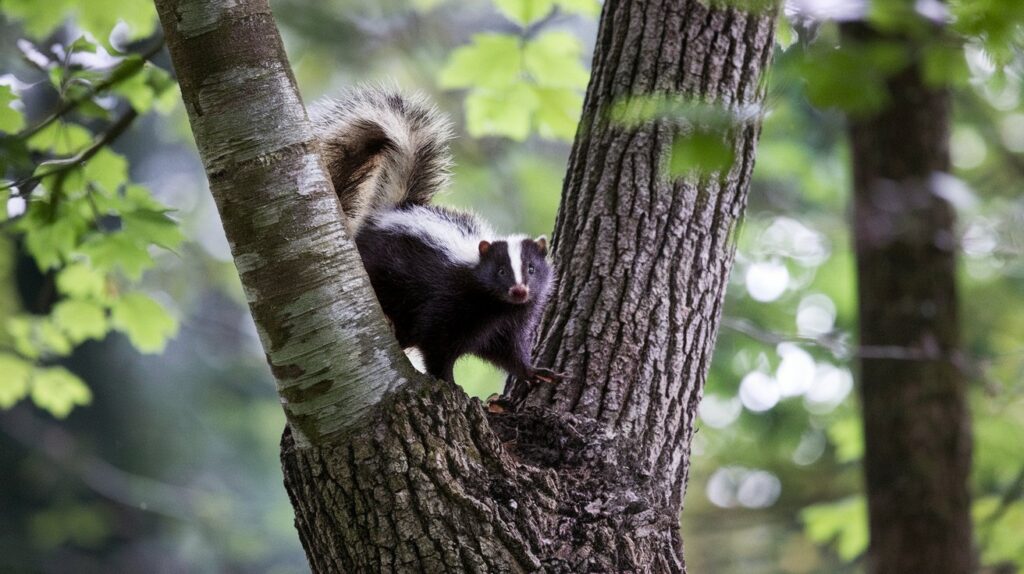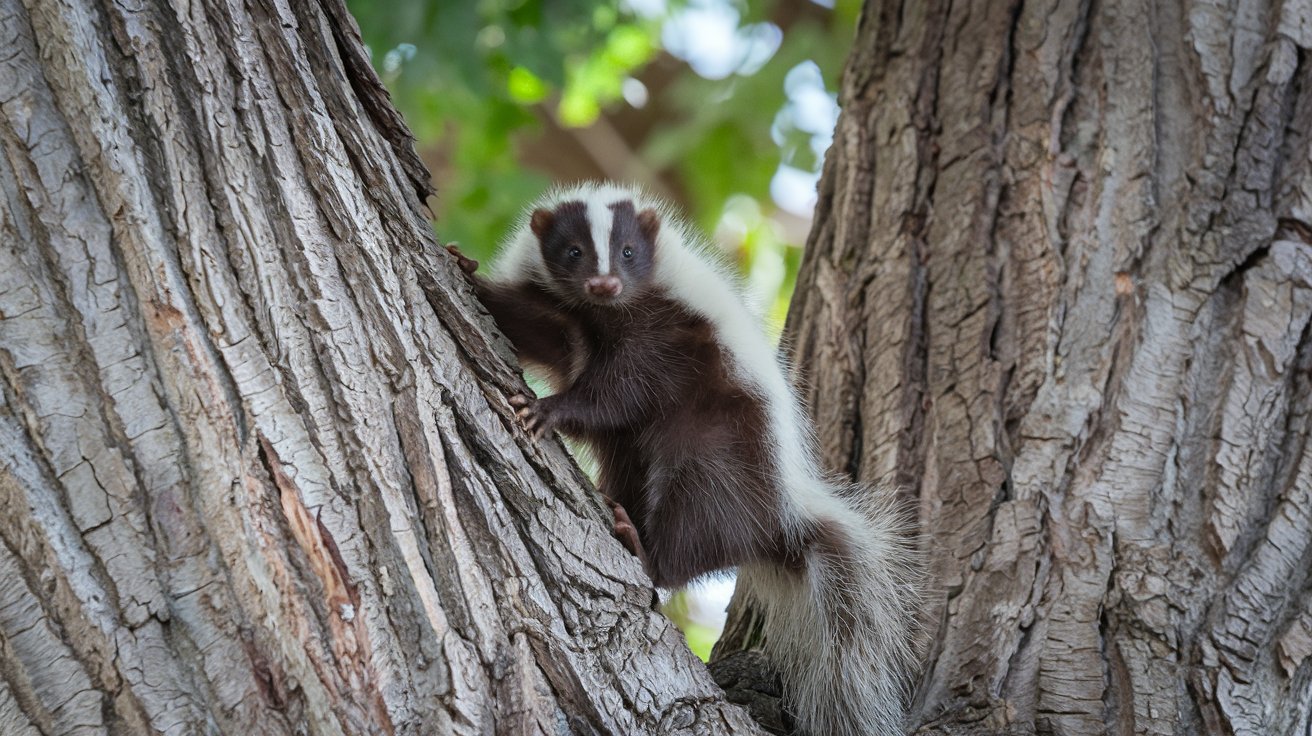Can Skunks Climb? (Trees, Walls, Fences & More Explained)
Last updated on June 2nd, 2025 at 10:29 am
Yes—but only some skunks. Spotted skunks can climb trees, fences, and brick walls. Striped skunks, the most common type, can’t climb well and usually dig under obstacles instead. Both types can manage stairs but rarely reach roofs or attics unless there’s a nearby structure.
I’m Robert Jones, proud owner of four pet skunks. Based on real-life experience and research, I’ll walk you through exactly what skunks can and can’t climb—and how to keep them out of places they shouldn’t be.
Skunk Anatomy: Built to Dig, Not to Climb
Skunks are part of the Mephitidae family, which also includes badgers. Their anatomy is better suited for life on the ground:
- Short, powerful legs make them excellent diggers.
- Curved claws are optimized for burrowing—not gripping or climbing.
- Stocky bodies hinder agility and balance, especially in vertical motion.
Unlike raccoons or squirrels, skunks lack flexible toes and footpads needed for scaling trees or fences. However, one exception exists: the spotted skunk, which is smaller and more agile.
Can Skunks Climb Trees, Walls, and Fences?

Can Skunks Climb Trees?
For the most part, no—at least not striped skunks. A striped skunk might place its front paws on a tree trunk if something interesting is up there, but you’re unlikely to find one perched high in a tree. The exception is the spotted skunk, which is a much better climber. These nimble skunks can climb trees to escape predators or search for food, though they still prefer staying close to the ground.
Can Skunks Climb Fences?
It depends on the type of fence and the skunk species. Spotted skunks have been observed climbing fences up to six feet high, especially chain-link or wooden fences with footholds. Striped skunks, being heavier and less agile, generally avoid climbing. They may attempt to pull themselves up a short fence, but if given the choice, they’ll dig underneath rather than go over. A smooth vinyl or metal fence presents an insurmountable obstacle for any skunk.
Can Skunks Climb Walls or Brick Surfaces?
Smooth walls—such as the side of a house or a shed—are too difficult for skunks to climb. They lack the sticky footpads of geckos or the grasping abilities of raccoons. However, if a brick or cinder block wall has enough texture and gaps, a small spotted skunk might be able to clamber up a short distance. Still, high walls generally serve as effective skunk deterrents.
Skunks in Human Spaces
Can Skunks Get into Attics?
Skunks rarely end up in attics, as they don’t naturally seek out high places. Striped skunks simply lack the ability to climb up siding or trees to reach a roof. However, spotted skunks have been known to climb fences or trees next to homes, gaining roof access and potentially entering through an open vent. While uncommon, securing any attic access points and trimming tree branches that touch your house can prevent unwelcome skunk guests.
Can Skunks Climb Ladders or Steps?
Skunks can easily navigate steps—slowly but steadily. However, they cannot climb traditional ladders. If a ladder is angled like a ramp or features wide, flat steps, a skunk might attempt to use it, but sheer vertical climbs are beyond their ability.
Can Skunks Climb into Cars?
Skunks cannot climb into a closed vehicle. They may, however, sneak into an open garage or crawl under a parked car. Sometimes, they even climb into engine compartments from below, much like cats seeking warmth. Keeping your garage and car doors closed at night helps prevent these unexpected encounters.
Preventing Skunks from Entering Your Property

Since skunks prefer digging over climbing, blocking ground-level access points is the best way to keep them out. Here are some effective, humane strategies:
- Seal Up Entry Points: Skunks love burrowing under decks, sheds, and porches. Close any gaps using wire mesh or boards and extend the barrier a foot underground to prevent digging.
- Skunk-Proof Your Fences: If skunks can’t go over, they’ll try to go under. Bury your fence at least 12 inches into the ground, or install an L-shaped barrier extending outward to deter digging.
- Remove Attractants: Secure trash cans, bring pet food indoors at night, clean up fallen fruit, and treat your lawn for grubs—one of skunks’ favorite foods.
- Keep Your Yard Tidy: Piles of wood, brush, or debris create perfect hiding spots for skunks. Keeping your yard clean reduces their shelter options.
- Use Deterrents Wisely: Motion-activated lights, sprinklers, or even playing a radio near a skunk den can encourage them to leave. However, strong-smelling deterrents like mothballs or ammonia are often ineffective and may be harmful to pets and wildlife.
- Humane Eviction: If a skunk has already moved in, wait until night (when it’s out foraging), then loosely fill its burrow entrance with soil. This allows the skunk to leave but not re-enter. If the skunk doesn’t leave on its own, consider calling a wildlife removal expert for safe and humane relocation.
Conclusion
Yes, skunks can climb—but only to a limited extent. Spotted skunks are more agile and can scale trees and fences, while striped skunks stick to the ground. For homeowners, this is good news: by focusing on securing fences, decks, and sheds at ground level, you can effectively skunk-proof your property.
A skunk’s short legs, digging claws, and stocky body simply aren’t designed for serious climbing. They prefer to burrow under or walk around obstacles rather than go over them. Knowing this, you can take the necessary steps to prevent skunk invasions while respecting these unique creatures’ role in the ecosystem.

